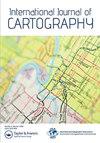幸福感唤起场所:基于量表间信度检验的唤起场所概念模型验证
IF 0.9
Q4 COMPUTER SCIENCE, INFORMATION SYSTEMS
引用次数: 0
摘要
一个唤起情感、回忆和形象的地方被定义为一个唤起情感、记忆和形象的地方。幸福唤起的地方是让人们充电和感到平静的地方。在汉堡(德国)、艾姆斯(爱荷华州)和Vitória(巴西)进行了一系列测绘实验,收集了有关幸福唤起地点及其描述的数据。在此基础上,设计了唤起性场所概念模型(CMEP)。它将参与者用语言表达的对唤起性场所的描述概念化。该模型强调通过其特征、体验、感官和价值来描述唤起性场所的有形和无形属性的价值。本文的主要目的是介绍CMEP及其验证方法,该方法是在维也纳(奥地利)和格林内尔(爱荷华州)收集的一组新数据的帮助下完成的。评估者间信度(IRR)检验为其验证提供了一个框架。两位评价者使用了新收集的数据和CMEP中提出的分类。内容分析和IRR计算为CMEP的变化和改进提供了依据。最后,对本文的主要研究成果和未来的研究方向进行了讨论。本文章由计算机程序翻译,如有差异,请以英文原文为准。
Well-being evocative places: validating the conceptual model of an evocative place based on the inter-rater reliability test
ABSTRACT An evocative place is defined as a place that evokes emotions, memories and images. Well-being evocative places are places that enable people to recharge and feel at peace. Data about well-being evocative places and their descriptions was collected in a series of mapping experiments in Hamburg (Germany), Ames (Iowa), and Vitória (Brazil). The Conceptual Model of an Evocative Place (CMEP) was designed based on the collected data in these three cities. It conceptualizes descriptions of evocative places as expressed in words by the participants. The model stresses the value of tangible and intangible attributes of evocative places described by their characteristics, experience, senses and values. The main goal of this article is to present the CMEP and the methodology for its validation accomplished with the help of a new set of data collected in the cities of Vienna (Austria) and Grinnell (Iowa). The inter-rater reliability (IRR) test provided a framework for its validation. Two raters used newly collected data and the categories proposed in the CMEP. The content analysis and the calculated IRR served as the basis for the changes and improvements of the CMEP. The article concludes with a discussion of the main results and future research directions.
求助全文
通过发布文献求助,成功后即可免费获取论文全文。
去求助
来源期刊

International Journal of Cartography
Social Sciences-Geography, Planning and Development
CiteScore
1.40
自引率
0.00%
发文量
13
 求助内容:
求助内容: 应助结果提醒方式:
应助结果提醒方式:


